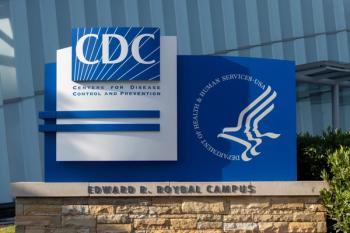
It’s Not Just a Cough: Harms Associated With Coughing
Coughing is highly prevalent in all medical settings and affects a wide variety of body systems.
Cough is one of the most frequent causes primary care visits, accounting for 8% of all consultations.1 Whether acute or chronic, the causative factor varies.
A researcher from Hebrew University and Hadassah Medical School performed a systematic review of literature to analyze cough-associated and cough-induced pathologies.2 The search, published in the American Journal of Medicine, addressed the issue of under-representation of prospective studies on cough-associated harms. The researcher identified relevant articles, case reports, and letters to capture rare and common events of cough associated pathologies.
As a pharmacist, your insight has a direct effect on patient outcomes. Help drive medicine forward with your opinions. Participate in a quick survey of OTC products for a chance to win a $1,000 Visa gift card. Vote now by clicking here: https://hraresearchnetwork.com/wix/p6499706.aspx?hPTsource=5
Findings from the review indicate coughing’s impact on many systems including upper airways, abdominal wall, heart, central nervous system, GI tract, eye, urogenital systems and emotional/mental harm.2 These pathologies ranged in frequency and severity. For example, a main symptom of GERD was a chronic cough seen in 27.5% of 2196 patients.2
The researcher also noted that chronic cough was a risk factor or stress urinary incontinence in 24% to 53.8% of women.2
The overall prevalence of many harms is unknown due to the lack of prospective studies of cough-associated pathologies. The researcher noted other identified harms like cough syncope and headache as potential masks to more serious etiologies that require further studies.
The study concluded that coughing is highly prevalent in all medical settings and affects a wide variety of body systems. Although the majority of these complications are rare, their pathologies are relevant to clinicians. They need to identify cough as its own issue when patients present and identify patients in whom suppression is warranted. Overall, the need for prospective studies focused on prevalence is essential for clinician recognition of these pathologies to better diagnose and treat patients.
Chevannah Hardie is a 2020 PharmD Candidate at the University of Connecticut in Storrs.
REFERENCES
- Holzinger F, Beck S, Dini L, Stöter C, Heintze C. The diagnosis and treatment of acute cough in adults. Dtsch Arztebl Int. 2014;111(20):356—363. doi:10.3238/arztebl.2014.0356
- COUGH Schattner A. The Wide-Ranging Spectrum of Cough-Induced Complications and Patient Harm. Am J Med. 2020 Jan 30. pii: S0002-9343(20)30058-9. doi:10.1016/j.amjmed.2019.12.044. [Epub ahead of print]
Newsletter
Stay informed on drug updates, treatment guidelines, and pharmacy practice trends—subscribe to Pharmacy Times for weekly clinical insights.




















































































































































































































